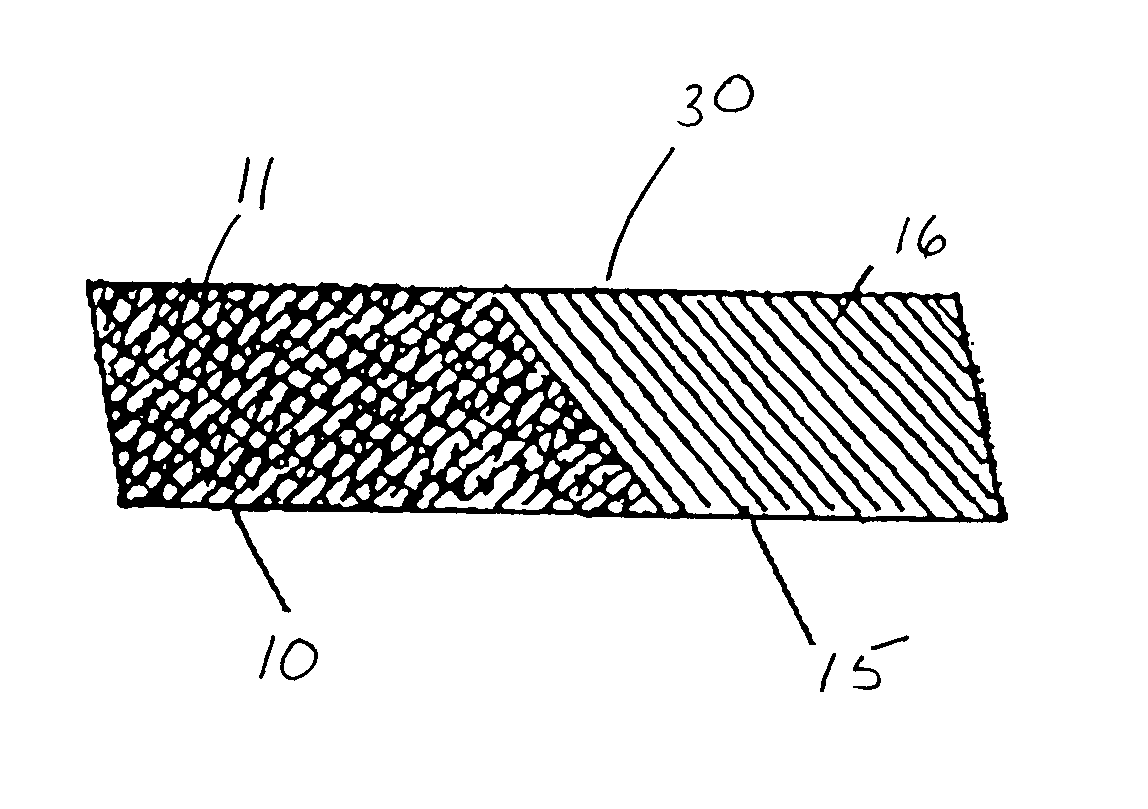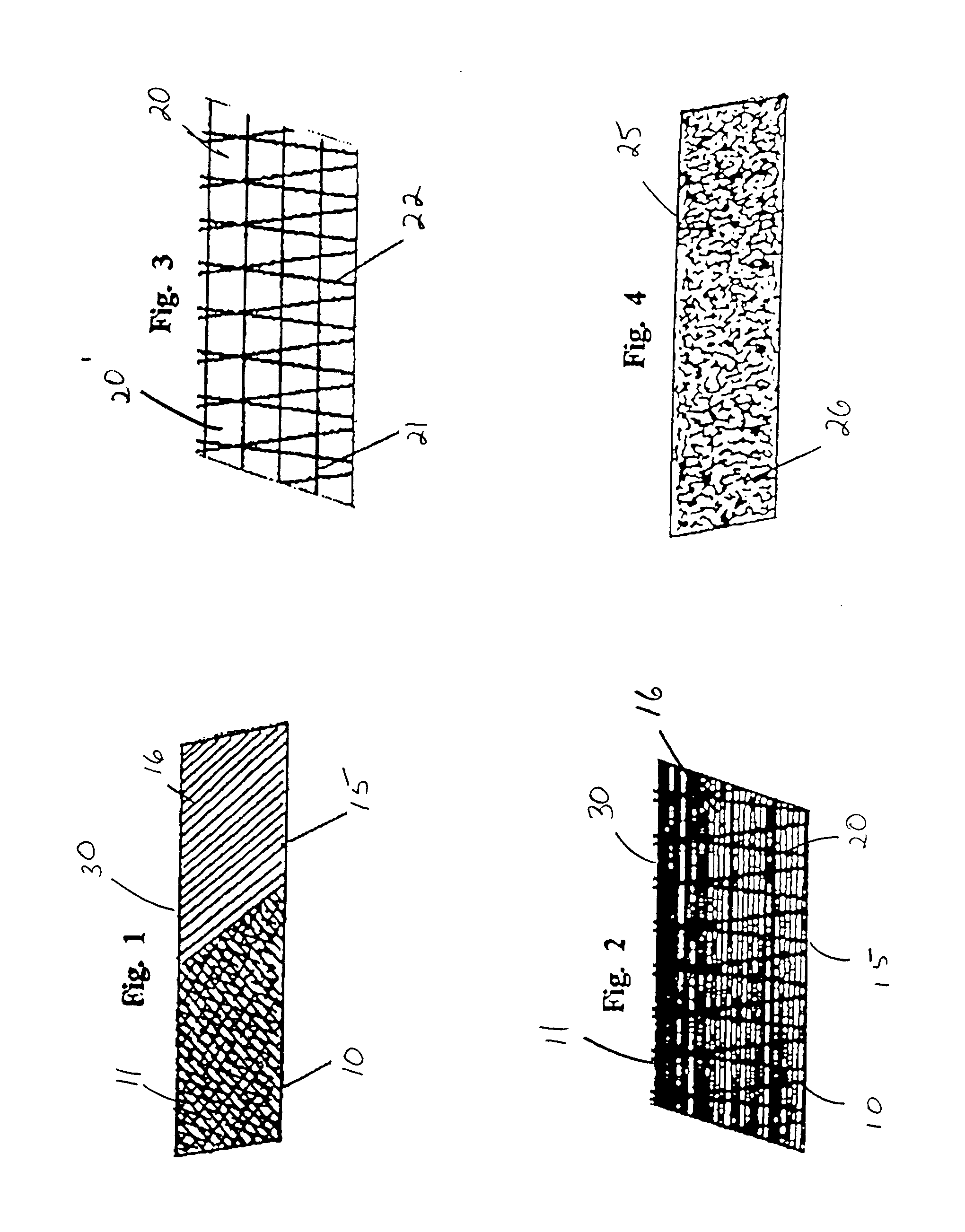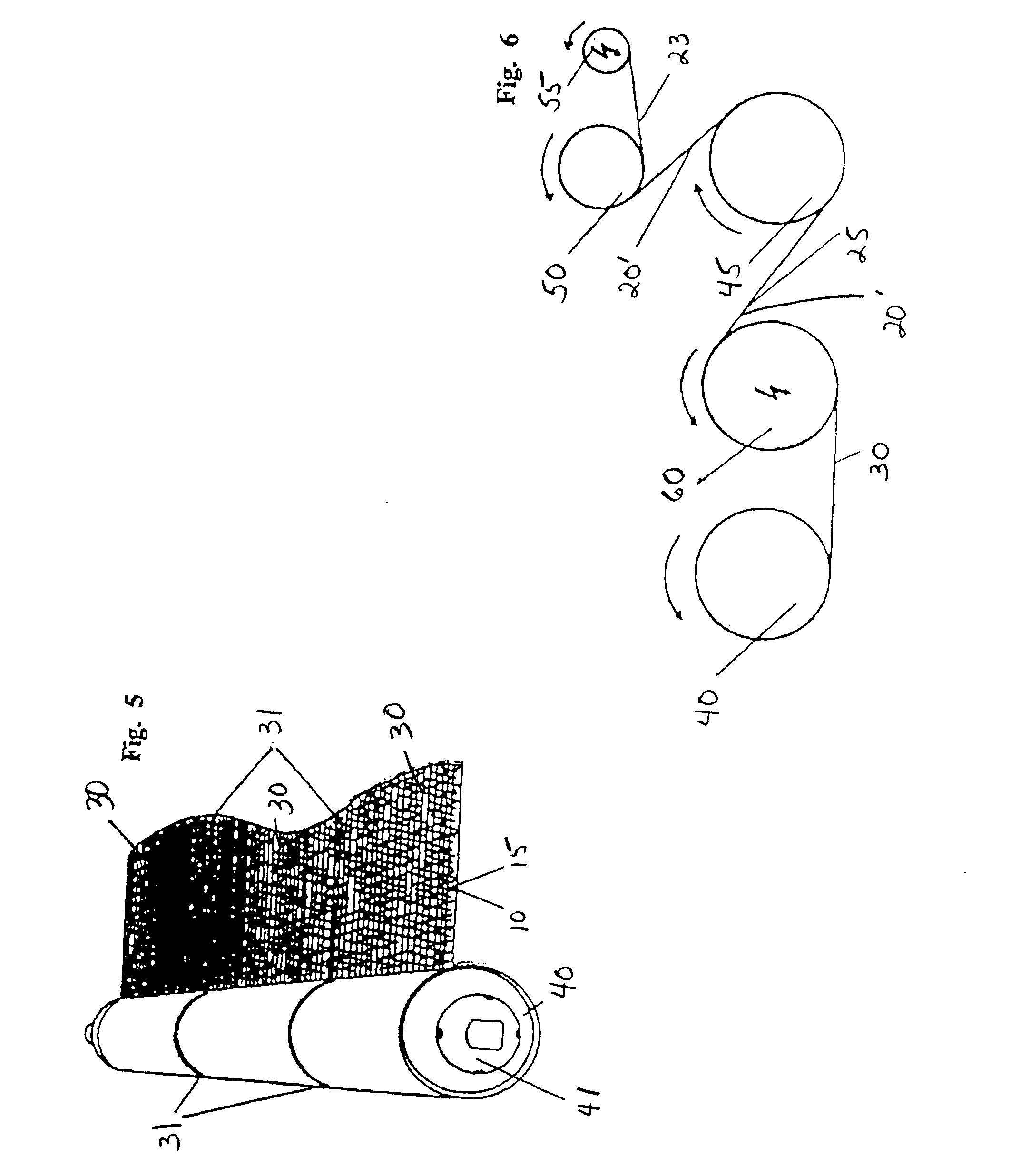Multilayer textile reinforcement web
- Summary
- Abstract
- Description
- Claims
- Application Information
AI Technical Summary
Benefits of technology
Problems solved by technology
Method used
Image
Examples
Embodiment Construction
[0013] Referring to the drawings in detail wherein like elements are indicated by like numerals, the purpose of the present invention is to overcome drawbacks that accrue from both limited web widths and limited web connection strength. To achieve this, two single webs 10, 15 are glued together. In other embodiments of the invention, more than two single webs may be used. FIG. 1 illustrates two single webs 10, 15 attached to each other, the first web 10 having fiber strands 11 in ±45° fiber orientations and the second web 15 having fiber strands 16 arranged in parallel. FIG. 2 illustrates two single webs 10, 15 having fiber strands 11, 16 arranged in parallel. The chosen single webs 10, 15 are then glued together with adhesive threads 20. As may be best seen in FIG. 3, an adhesive thread grid 20 with longitudinal threads 21 and transverse threads 22 may be used. The threads 21, 22 may be composed of glass, carbon, aramid, polyester, spun rayon and similar fibers. The single webs 10,...
PUM
| Property | Measurement | Unit |
|---|---|---|
| Angle | aaaaa | aaaaa |
| Adhesivity | aaaaa | aaaaa |
| Tension | aaaaa | aaaaa |
Abstract
Description
Claims
Application Information
 Login to View More
Login to View More - R&D
- Intellectual Property
- Life Sciences
- Materials
- Tech Scout
- Unparalleled Data Quality
- Higher Quality Content
- 60% Fewer Hallucinations
Browse by: Latest US Patents, China's latest patents, Technical Efficacy Thesaurus, Application Domain, Technology Topic, Popular Technical Reports.
© 2025 PatSnap. All rights reserved.Legal|Privacy policy|Modern Slavery Act Transparency Statement|Sitemap|About US| Contact US: help@patsnap.com



